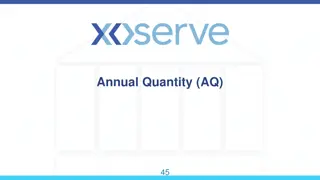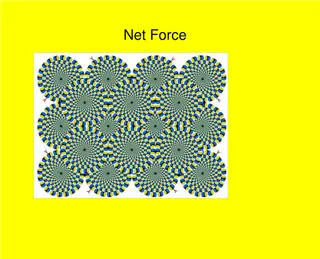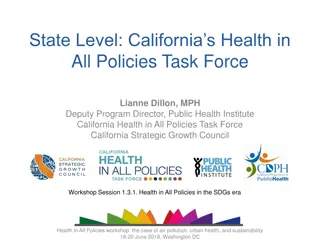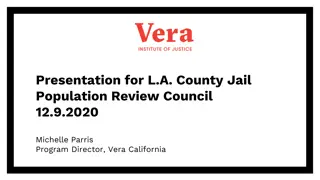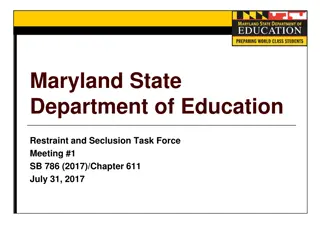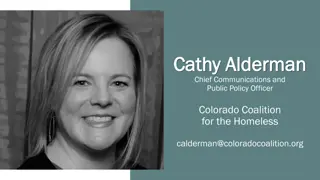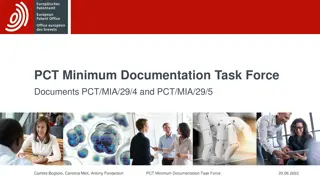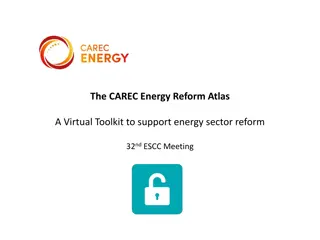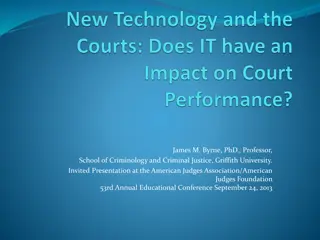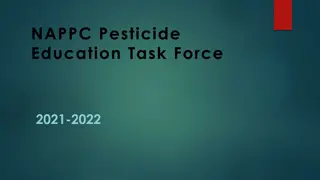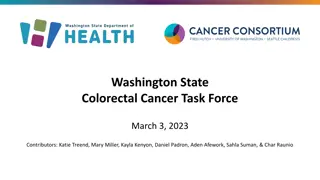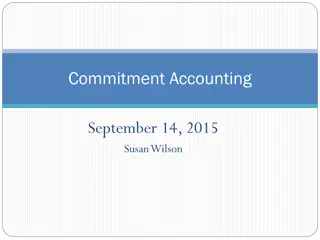Jail and Corrections Reform Task Force Overview
This document provides insight into the DOC Classification system and the reforms implemented by the Jail and Corrections Reform Task Force. It discusses the objective-based classification systems, risk/needs assessments, and scored risk factors used to make custody decisions. The manual is continuously updated to ensure validity and reliability. Detailed processes for classification, sentencing, and community custody levels are outlined, emphasizing the importance of reducing prison violence and misconduct. The document also touches upon various programs and felony classifications under KRS 532.100.
Download Presentation

Please find below an Image/Link to download the presentation.
The content on the website is provided AS IS for your information and personal use only. It may not be sold, licensed, or shared on other websites without obtaining consent from the author.If you encounter any issues during the download, it is possible that the publisher has removed the file from their server.
You are allowed to download the files provided on this website for personal or commercial use, subject to the condition that they are used lawfully. All files are the property of their respective owners.
The content on the website is provided AS IS for your information and personal use only. It may not be sold, licensed, or shared on other websites without obtaining consent from the author.
E N D
Presentation Transcript
DOC Classification Jail and Corrections Reform Task Force July 24, 2023 Department of Corrections Division of Population Management Kieryn Fannin, Director
Classification vs Risk/Needs Assessment Objective based classification systems result in more secure custody decisions that help reduce prison violence, escapes, and institutional misconduct. Risk/Needs Assessment (KyRAS) identifies program needs and risk of re- offense for each individual.
Objective based risk instrument Developed with assistance of National Institute of Corrections (NIC) CLASSIFICATION Manual is updated in accordance with recommendations from validity and reliability studies
Classification Documents Four (4) DOCUMENTS Initial Female Initial Male Reclassification Female Reclassification Male
SCORED RISK FACTORS Disciplinary behavior Jail and institutional Severity of Current Offense History (Number of) Other Felony Convictions Severity of Other Felony Convictions Escape History KyRAS Family/Social and Peer Companion Score Education/Employment Age OVERRIDES ADMINISTRATIVE DISCRETIONARY
Community (Level 1)* Custody Levels Minimum (Level 2) Medium (Level 3) Maximum (Level 4) *Additional requirements
Sentencing > PIN entered > Judgment uploaded to KOMS > Time calculated > Reviewed for classification by CTO s at RCC AC. PROCESS - Jail If eligible per KRS 532.100, classified (on paper, not face to face) and the jail is informed via email. If ineligible per KRS 532.100, inmate is maintained on controlled intake and scheduled for admission to an Assessment Center. *All inmates determined to be ineligible for classification in a jail are processed through an Assessment Center except for those inmates sentenced to death.
KRS 532.100 Class D Extended Program (DE) Community Custody Program (CC) Class D Program (CD) Class D felony Sentence of five (5) years or less Sex offense, sentence less than two (2) years Not serving a sentence for Providing False, Misleading or Incomplete Info on Sex Offender Registration Form or Failure to Comply with Sex Offender Registry Class D felony Non-violent/non-sexual offenses (statute) Sentence greater than five (5) years but currently has less than five (5) years remaining to be served Class D felony with greater than five (5) year sentence Class C felony Classified as community custody
Controlled Intake and Who Goes Where CD/CC/DE Eligible Classified in jail Assessment Center (RCC, KCIW, RC) Controlled Intake (CI) Not Jail Eligible Death Sentence KSP/KCIW
Classification Comparison Jail Initial classification completed by RCC AC CTO and notification sent electronically to housing facility. Institution All classifications conducted face to face by assigned (CTO). Reclassifications conducted bi- annually based on established schedule or whenever there is a triggering event. Reclassification Conducted by Central Office Classification Staff Risk and needs reassessment (PIT, RT, SRT) and Reentry Plan completed in conjunction with reclassification Upon triggering event (disciplinary, additional sentence, detainer lodged/released). Upon request by jail, eligible every 90 days. Risk and needs assessment completed by Probation & Parole at time of PSI (CST) is used for classification. No reassessments or Reentry Plans are completed.
Classification Process - Jail Year Average Number classified Per Month Total Number Classified Per Year 2019 992 11,913 2020 699 8,395 2021 691 5,526 2022 903 10,837 Jan-Jun 2023 902 5,414
Controlled Intake Inmates Pending Classification to Jail Programs Program CD/DE CC Number of Inmates Waiting Average length of wait 28 6 14 days 22 days As of 7/10/23
Controlled Intake Inmates Classified to Jail Programs June 2022 June 2023 Program CD/DE CC Combined (CC/CD/DE) Average length of wait 14 days 31 days 18 days January 2023 June 2023 Program CD/DE CC Combined (CC/CD/DE) Average length of wait 13 days 18 days 13 days As of 7/10/23
Total Population 2018 - Present 30000 24017 25000 23868 23651 23590 23229 20348 19745 19720 19561 19355 20000 18670 18628 18234 15000 10000 5000 0 2018-01 2018-06 2019-01 2019-06 2020-01 2020-06 2021-01 2021-06 2022-01 2022-06 2023-01 2023-06 2023-07
Controlled Intake 2018 - Present 3500 3258 30593137 2931 3000 28212746 278327422651 2625 2619 2549 24422481 24092465 2449 2435 2408 2388 2500 2226 2139 2081 2040 2000 1500 1000 500 0
Controlled Intake by Days and Gender July 16, 2023 Male Female Total 700 630 628 581 600 536 500 406 400 359 315 300 233 200 94 82 100 47 47 28 16 12 0 Under 45 days 45 - 89 days 90 - 179 days 180 - 365 days Over 365 days *1 Female Act Rel, 16 Males OTC


